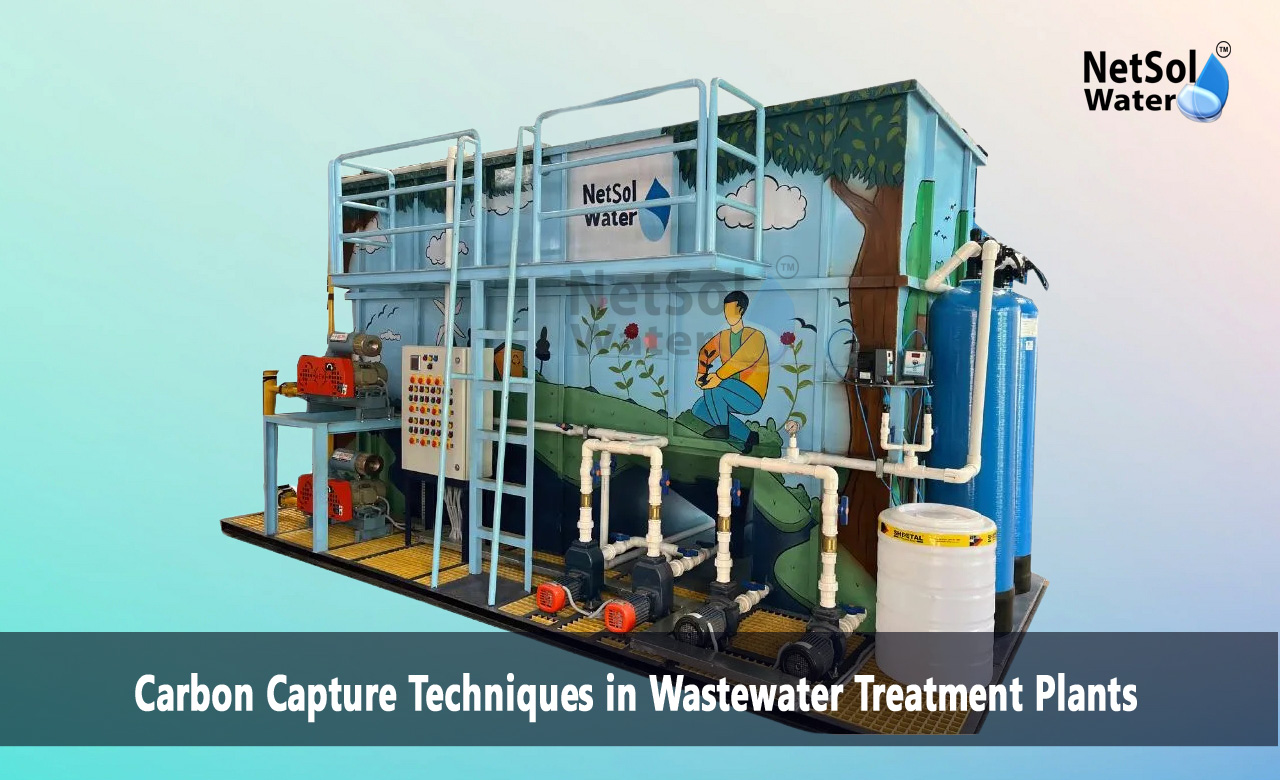Carbon Capture Techniques in Wastewater Treatment Plants
Carbon Capture Techniques in Wastewater Treatment Plants offer pathways to reduce greenhouse gas emissions and to turn a cost center into a resource center. Wastewater streams contain carbon in several forms and treatment plants can trap and transform that carbon before it escapes to the atmosphere. This approach supports climate goals and can create valuable byproducts for reuse in energy or materials. This blog lets you gain knowledge about the connection between treatment operations and climate action while preparing them for a closer look at specific capture options.
Biological Carbon Capture
Biological methods use microbes and natural processes to capture carbon. These methods suit many treatment plants because they build on existing biological units and they can reduce emissions while improving treatment.
Microbial Carbon Fixation
Microbial Carbon Fixation uses bacteria to convert dissolved carbon into biomass. Treatment systems can favour microbes that lock more carbon into sludge. Operators can adjust oxygen levels and feed patterns to guide microbial communities toward carbon sequestration. This approach can increase the amount of carbon that stays inside the plant and reduces emissions from aeration.
Anammox and Nitrifying Systems
Anammox and nitrifying systems change how nitrogen and carbon interact. These systems cut energy use and reduce the need for organic carbon removal steps that add emissions. Plants can retrofit existing tanks or design new lines to use these microbes. The result is less carbon escaping and better nitrogen control.
Plant staff can shift hydraulic retention times and sludge handling practices to boost carbon retention. These changes often need simple control tweaks and targeted monitoring. The link from microbiology to plant performance makes these options practical and scalable.
Chemical Adsorption and Capture
Chemical methods remove carbon by capturing it from gas streams or liquid phases. These choices suit plants that already handle large gas flows from digesters and clarifiers.
Amine Based Scrubbing
Amine Based Scrubbing captures carbon dioxide from biogas or headspace air. The method uses chemical contactors to bind gas phase carbon and then releases it for storage or reuse. Plants can integrate scrubbing with gas upgrading steps to produce a cleaner biogas.
Solid Sorbents and Activated Materials
Solid Sorbents and Activated Materials trap carbon onto solid surfaces. These materials can regenerate and release concentrated carbon for processing. They work well when gas streams are steady and when footprint matters. The materials offer flexible deployment in retrofit projects.
Engineers must balance capture efficiency with energy use for regeneration. Heat integration and staged capture steps can cut energy needs. Plant managers can plan pilot tests to measure performance before full scale rollout.
Mineralization and Enhanced Weathering
Mineralization forces carbon to turn into a stable solid that plants can store safely. This path reduces the risk of re release and can produce useful minerals.
Alkaline Treatment and Precipitation
Alkaline Treatment and Precipitation shifts water chemistry so that dissolved carbon forms solid carbonate minerals. This process can use waste streams that contain calcium or magnesium to help the reaction. The solids that form can move to sludge lines and then to safe disposal or reuse.
Electrochemical Mineralization
Electrochemical Mineralization uses electricity to change pH and to force carbonate formation. Systems can run on renewable power and can tune conditions to capture more carbon per unit energy. These setups suit sites with access to low cost electricity.
These methods lock carbon in long lasting forms and they can reduce greenhouse intensity from sludge handling. Teams must monitor mineral composition and plan for safe management of new solid streams.
Membrane Separation and Gas Technologies
Membrane and gas technologies separate carbon from air and from biogas. These solutions fit plants that treat large volumes of gas and need compact equipment.
Hollow Fiber Membranes
Hollow Fiber Membranes let operators separate carbon dioxide from other gases by size and solubility. These units show steady capture rates and they need predictable gas flows. They also scale from small to large plants.
Pressure Swing Adsorption
Pressure Swing Adsorption captures carbon by using pressure changes to trap gas molecules. The cycle regenerates the adsorbent without heating. That lowers energy costs and makes capture more efficient in many cases.
Designers must size units to match gas production and to prevent process upsets. Control systems must coordinate gas cleaning with downstream uses like biogas injection or storage.
Algae Based Capture Systems
Algae systems use photosynthesis to pull carbon from wastewater and from air. They offer the dual benefit of water polishing and carbon removal.
Open Ponds and Raceway Systems
Open Ponds and Raceway Systems host algae in shallow flows where sunlight drives growth. These systems can treat nutrients while locking carbon into biomass that operators harvest. The harvested algae can feed anaerobic digesters which then produce energy.
Photobioreactors
Photobioreactors enclose algae in tubes or panels and they give more control over growth conditions. These units can reach higher capture per area and they reduce contamination risks. Plants can choose the format that fits space and budget limits.
Teams can route algae to energy recovery to material production or to soil amendments. These options add value while keeping carbon in a useful form.
Conclusion
Carbon Capture Techniques in Wastewater Treatment Plants can cut emissions and add new value streams. Each method fits different plant sizes and goals. Operators can choose biological chemical mineralization, membrane or algae options alone or in combination to meet local needs. For help choosing the best path contact our team for a consultation. We will review your site data and suggest practical steps that match your budget and goals. Request a consultation to explore how Carbon Capture Techniques in Wastewater Treatment Plants can work at your facility.
Contact Netsol Water at:
Phone: +91-9650608473, Email: enquiry@netsolwater.com



